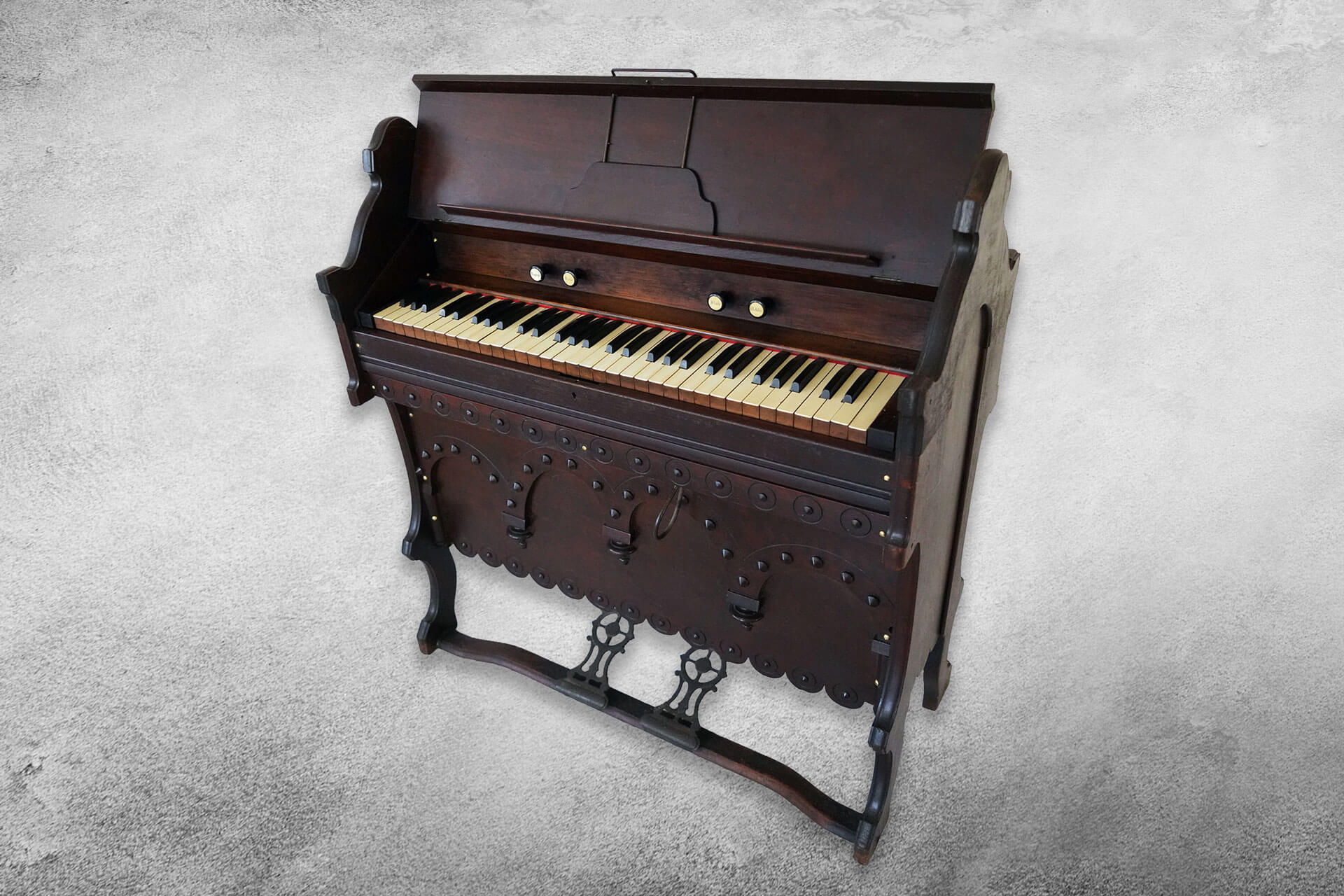This tool was such a minor renovation teaser for us. It is a relatively small harmonium - with a height of 100 cm, a length of 100 cm and a depth of 35 cm. The skeleton of the instrument is made of spruce wood; the shell is then made of oak wood. Its range is from FF to f3 and has 2 registers divided into bass:
and diskant:
In addition, the Harmonium also contains a Venetian blind, with the help of which the intensity of the emitted sound can be amplified or weakened with the right knee. Blowing is provided by cast iron pedals, which are connected to the bellows byleather belts. The age of the tool is quite considerable. We estimate the time of its origin to the first half of the 20th century, and according to the craftsmanship, it is probable that the tool was made in the United States of America. The marked serial number, which we found on the skeleton, would correspond to this assumption: 20 409.

Before the repair, the harmonium was in a relatively impoverished form. His bellows were completely disintegrated, skin swelled over years of disuse, and the wings of his folds were rotten. The whistles and valves were surprisingly in good condition. On the other hand, the outer face of the instrument was contaminated with stains likely to be painted, and the whole body of the harmony was connected by different types of screws from different materials. In addition, the individual parts of the casing did not fit exactly on top of each other, which were probably caused by unprofessional interventions in the past.
After disassembly, the entire tool was cleaned of age-old layers of dust and dirt, and its inner wooden parts were treated with linseed oil for preservation.
As for restoration repairs, it was first necessary to repair the bellows so that we could get to the mechanisms and valves of the instrument and find out what condition they were in. We removed the adhesive residue and cleaned the bellows plates. Surprisingly, they have been preserved in a relatively decent condition. We replaced the wings of the folds, which had been degraded for years, and connected them with new leather and replaced the reverse-throttle valves in the storage bellows, but also on a pair of blowing bellows. In addition, they were equipped with brand new leather belts, which provide their drive for pumping air. In the end, the entire valve chamber was covered with new leather and the instrument was assembled into a playable state and, of course, tested, so that we had a chance to record other possible defects in time, which we could not found without functional bellows.
It turned out that the pipes and valves were in a relatively decent condition, they only needed to be cleaned. After agreement with the owner of the harmonium, we left the tone valves in their original condition, we justintoned a few tongues to get the appropriate tone and color.
We cleaned the visible part of the harmonium from paint deposits and rubbed it with linseed oil to revive the structure of the material. We replaced a number of inappropriately used screwsfrom various materials and, in agreement with the client, replaced the visible screws with beautifully shiny brass ones. In the final, we assembled the outer casing of the instrument, which was not an easy task, because previous unprofessional interventions caused inaccurate fitting of individual parts. This had to be solved in some places by lining with new pieces of wood. Thanks to this, it was even possible to attach the skeleton and restore it to its original form. Fortunately, these adjustments are imperceptible to the outside observer, and in our opinion the result was worth the effort. What do you think?
Do not hesitate to contact us